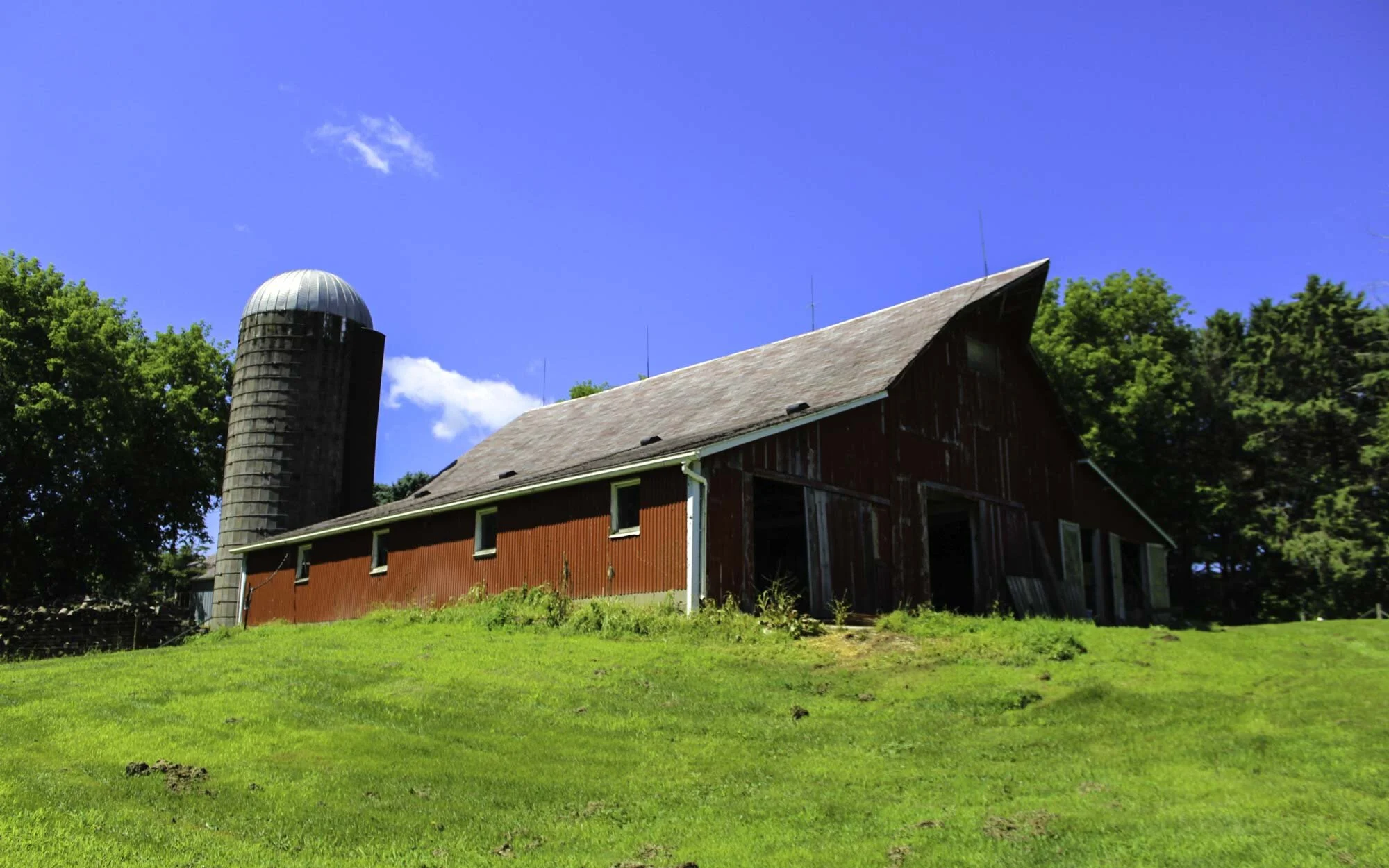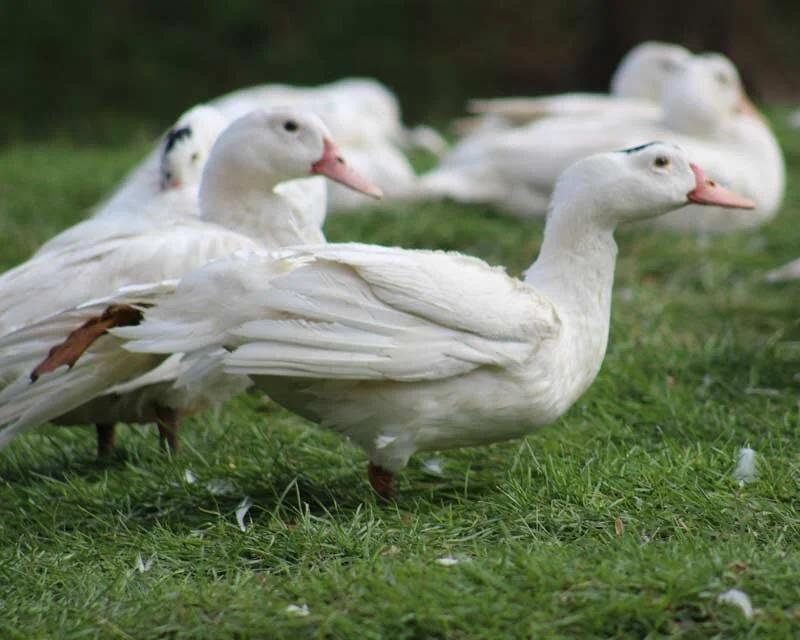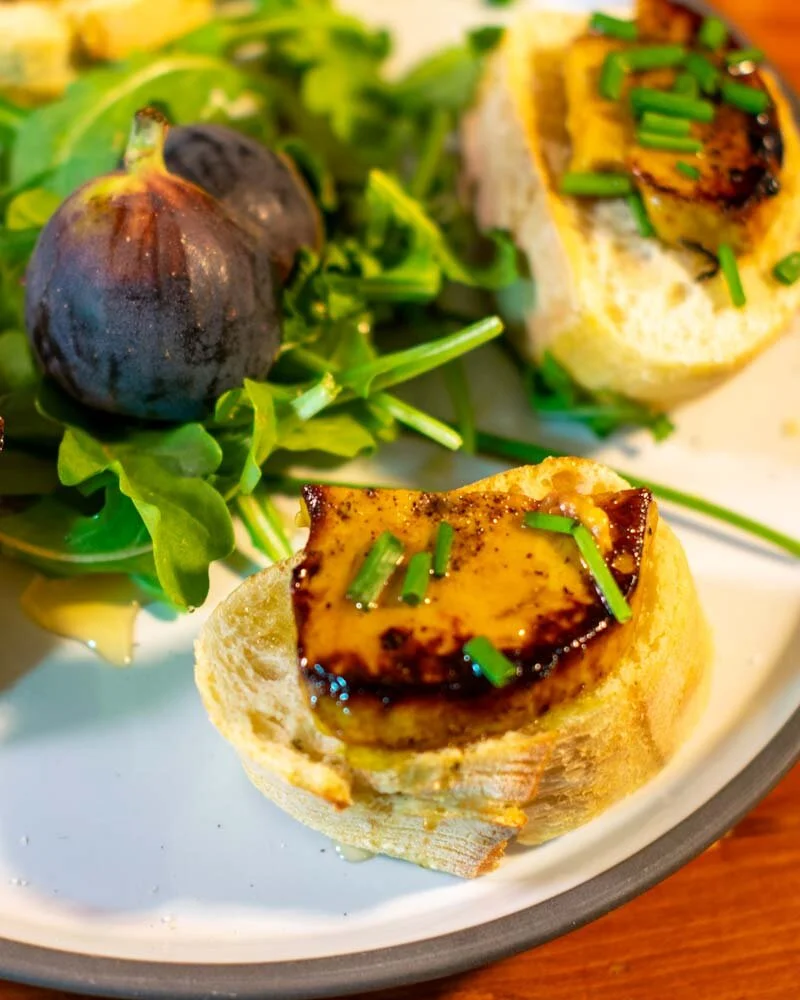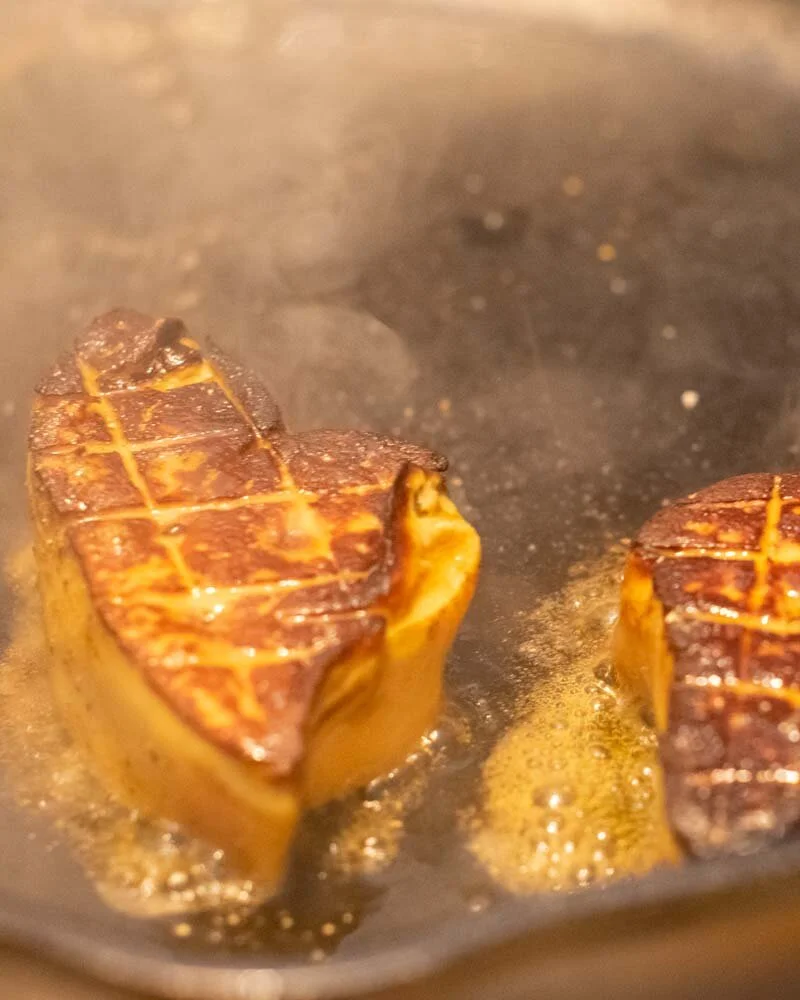
What is Foie Gras
Learn about Foie Gras, its rich history, how it’s made, and the many ways it can be prepared.
There are very few ingredients that embody the rich tradition of French cuisine and culture the way Foie Gras does. Rich and creamy, with a sublime texture, there’s a reason why Foie Gras has long been considered one of the culinary world’s most prized ingredients.
When Christian and Liz decided to start Au Bon Canard more than twenty years ago, their goals were to:
Bring the rich tradition of artisanal Foie Gras to America.
Work on a small scale that lets them get to know their customers while using farming techniques that respect the animals and the land.
Honor this remarkable product that has been integral to many of the celebrations and good times in their lives by bringing it into yours.
Today Troy and Katie continue towards the same vision.
To help people better understand what Foie Gras is, how it’s made, and some of our favorite ways to prepare it, we’ve put together this page. If you have any questions, drop us a note and don’t forget to visit our shop to buy some for yourself.
About Foie Gras
Foie Gras comes from the fattened liver of a duck or goose and is widely considered one of the world’s great culinary delicacies. The English translation of the French term Foie Gras is “fatty liver.” It has a long history dating back to the ancient Egyptians and was popular during Roman times.
Over time it became an important part of French cuisine, with small farmers taking advantage of the natural inclination of ducks and geese to gorge themselves in the fall, fattening themselves up prior to migrating to warmer climates. Ducks and geese have the unique ability to store excesses of calories in the liver as fat; the result is Foie Gras.
Foie Gras is oval in shape and consists of two lobes of different sizes. The livers range from one to two pounds, have a golden appearance, and a sweet smell. The duck livers are graded A, B, and C depending on their overall quality.
The most important considerations when grading Foie Gras are texture, color, and mouthfeel. Size is not a determining factor in the grading process.
Grade A
Grade A livers are firm to the touch, flawless in appearance, and uniform in color. These livers are ideal for simple preparations such as searing, sautéing, or simple terrines that show off the beauty of the Foie.
Grade B
Grade B livers are generally softer to the touch and have some surface defects, such as blood spots or more prominent veins. These livers will still taste delicious but are more often used in mouses, pates, or other preparations where the appearance of the Foie Gras is changed during the cooking process.
Grade C
Grade C livers are inferior to Grade A and B livers and are usually used for sauces and to flavor other dishes where the liver is a secondary ingredient.

How Foie Gras is Made
Our small family farm is located in the rolling hills of southeastern Minnesota, just a few miles from the Mississippi River. We care for our small flocks of pasture-raised ducks without antibiotics, dietary supplements, appetite stimulants, or growth-promoting hormones to ensure an all-natural product. You can learn more about our story on our About page.
At Au Bon Canard, we raise Moulard ducks, a crossbreed between a Muscovy (dad) and a Peking (mom). This hybrid duck is used the vast majority of the time in Foie Gras production.
A few ducks out foraging at Au Bon Canard
The Moulard inherits its characteristic flavorful, rich meat from the Muscovy line and the sturdy athleticism of the Peking. Hardy, meaty, mellow, these ducks yield the finest Foie Gras, magrets, legs, etc.
Our farm’s season typically runs from September until May, following the birds’ natural instinct to store excess fat in their livers in cooler temperatures prior to yearly migrations.
The ducks live primarily outside, with plenty of space, sunshine, grass, and bugs to nibble on. Raising the ducks by hand on a small farm helps ensure that the Foie Gras and duck meat are of the highest quality.
Our products also benefit from small-batch processing and expert hand-cutting. The farm also includes a USDA approved and inspected processing plant on-site.
The small scale of our family operation allows us to:
Produce high-quality Foie Gras and other duck delicacies, following traditional artisanal methods and a seasonal cycle.
Provide humane living conditions for our birds throughout their lives.
Respect our birds, our land, and our customers.
“We have used Au Bon Canard Foie Gras for all 10 years we have been in business, and that’s because it is by far the best product we can find. We have visited the farm and it’s the most professional caretaking of animals we have ever witnessed. ABC Foie Gras has won every taste test we’ve put their Foie in. And that’s here in Minnesota and across the country. We gift ABC Foie Gras to chefs we know across the country as it’s one of the most exceptional products from our Minnesota farms.”
What Does Foie Gras Taste Like
The best Foie Gras has a rich, smooth, almost nutty flavor. It can be prepared in a myriad of ways -- from classic torchon to terrines, in a mousse, seared, sautéed, served with pasta or as an accompaniment to other proteins, such as steak.
What makes the taste and texture of Au Bon Canard’s Foie Gras superior to that of ducks raised on large farms is we’re able to focus on hand-raising small-batches that allow the ducks to live outdoors in a natural environment.
This approach provides a far superior yield, rendering considerably less fat when seared or sautéed.
How to Cook Foie Gras
With its rich history, there are thousands of delicious recipes and resources on how to prepare Foie Gras. The recipes generally fall into two categories, cold and hot preparations. Some of the more common cold preparations include terrines, mousses, parfaits, foams, and pates.
Here on the farm, our primary go-to preparation is to serve slices of raw Foie Gras on toasted baguettes, drizzled with local honey, then sprinkled with coarse sea salt! It’s a simple presentation to make at home, and nothing shows off the purity of the livers better!
The most popular way to serve Foie Gras is to quickly pan-sear it in a scorching hot pan. Here is a recipe with a few tips for Pan Seared Foie Gras with Caramelized Figs from our friends at Umami.
Other hot preparations include roasting, torchon, sauteing, and sous vide. A tip when using any of the hot preparations is to limit the amount of time heat is being applied to the Foie Gras to just what’s needed for the recipe. When heat is applied for too long, the livers can start to melt away.
Frequently Asked Questions About Foie Gras
How to Store Foie Gras
Your Foie will arrive frozen. If your intention is to use it at a later date, place it immediately in the freezer as soon as you receive it.
How to Defrost Foie Gras
Place frozen Foie in the fridge and allow to thaw slowly. This process will require 2-3 days. Before using your Foie, it is always best to bring it to room temperature outside the fridge. 15 minutes will do the trick.



